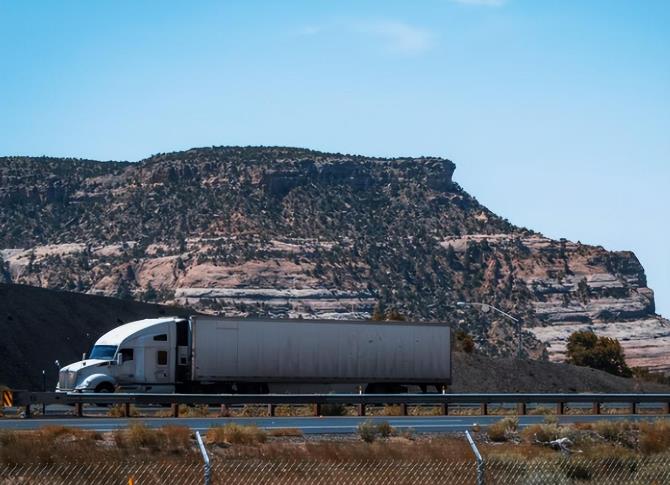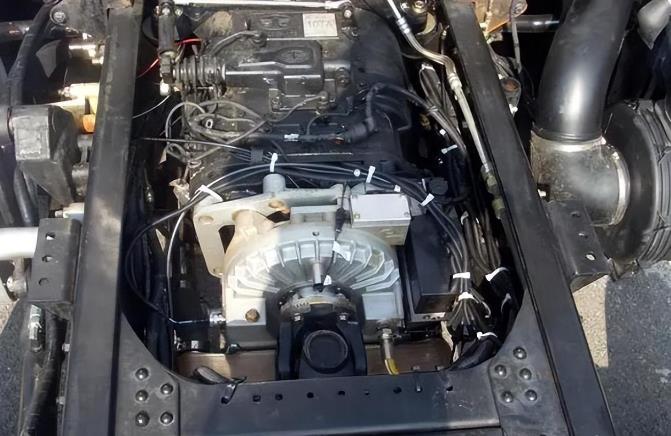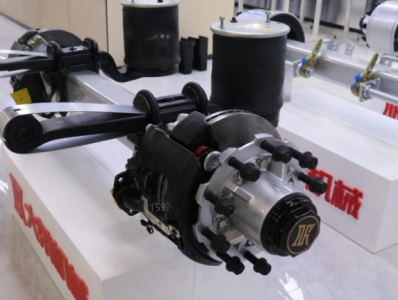What problems should be paid attention to in the use of hydraulic retarder?
Nowadays, the application of hydraulic retarder in commercial vehicles is more and more popular, as an auxiliary brake device, and even was once called the vehicle safety "artifact".
The working principle of the hydraulic retarder is to convert the kinetic energy of the vehicle into heat energy and then heat dissipation through the cooling system of the engine. Simply put, the high-temperature oil is sent to the cooler for cooling, and then the cooled oil is added back, so that the constant speed or deceleration of the vehicle is finally achieved.

Hydraulic retarder as a relatively new auxiliary brake device, although the function is relatively good, but also strict requirements for the mode of operation, if the use of improper, not only can not achieve the effect of auxiliary braking, trailer axle but also may cause excessive speed reduction leading to brake pusher, vehicle rolover and other problems.
Although the number of sets of hydraulic retarders on the market is not completely unified, they are basically divided into two gears: constant speed and brake gear, such as 1 gear is constant speed, and 2-4/5 gear is brake gear.
Constant speed refers to the constant speed of the vehicle at a set value, generally suitable for use in long downhill conditions. For example, the speed is constant to 50km/h, when the speed exceeds this setting, the liquid slow will enter the working state, control the vehicle speed; When the speed is less than the set speed, the liquid slow will automatically exit the working state.

It should be noted that when using the constant speed gear, the engine speed must be maintained to more than 1500 RPM, otherwise the engine water cycle is slowed down, which is easy to lead to high temperature or overheating of the oil, and the braking effect of the liquid slow may be reduced or even automatically withdrawn. In this case, the owner can increase the engine speed by downshifting the gearbox, so that the hydraulic retarder can start working again.
If the vehicle is still accelerating downhill in the constant trailer axle speed gear state, the owner can actively decelerate through the brake pedal, after all, the liquid slow is only an auxiliary brake device, can not replace the brake pedal.
Remember: in this case do not directly adjust the liquid slow to the maximum gear, because because the brake torque of the liquid slow is larger than the torque of the engine brake and the exhaust brake, if it suddenly enters the full open state, it is easy to cause excessive speed reduction to cause the vehicle to push head, rollover or even slip, affecting driving safety.

The brake gear of the vehicle is generally suitable for use in downhill and flat ground, the lowest gear brake torque is generally about 25%, the highest braking torque can reach 100%, the owner can according to the road conditions and speed, shift the handle, choose the appropriate gear.
It is worth noting that the highest grade of liquid slowdown is generally only used in the short distance braking that is not urgent, and the heat dissipation effect of the engine can not keep up with that of the engine for a long time, and the water temperature will rise sharply. Generally, the liquid slowdown can be withdrawn from the working state because of the high water temperature within ten seconds.

In addition, the gear of the liquid slow should be replaced by one gear, and it can not be used directly from the lowest gear to the highest grade, which has been mentioned above. The brake torque of liquid retardation acts on the drive trailer axle wheel. In some extremely bad road conditions such as wet road, snow road or dark ice road, the hydraulic retarder is disabled to avoid skidding or rollover.
Although the hydraulic retarder is easy to use, it belongs to the auxiliary brake device after all, and can not replace the brake pedal. The owner should not feel that he can be wanton overload because of the installation of the hydraulic retarder, once the downhill kinetic energy exceeds the tolerable range of the liquid retarder, I am afraid that the braking effect will be greatly reduced. In some very special conditions, perhaps liquid retarding also needs to be paired with other auxiliary braking devices in order to achieve better braking effects.







